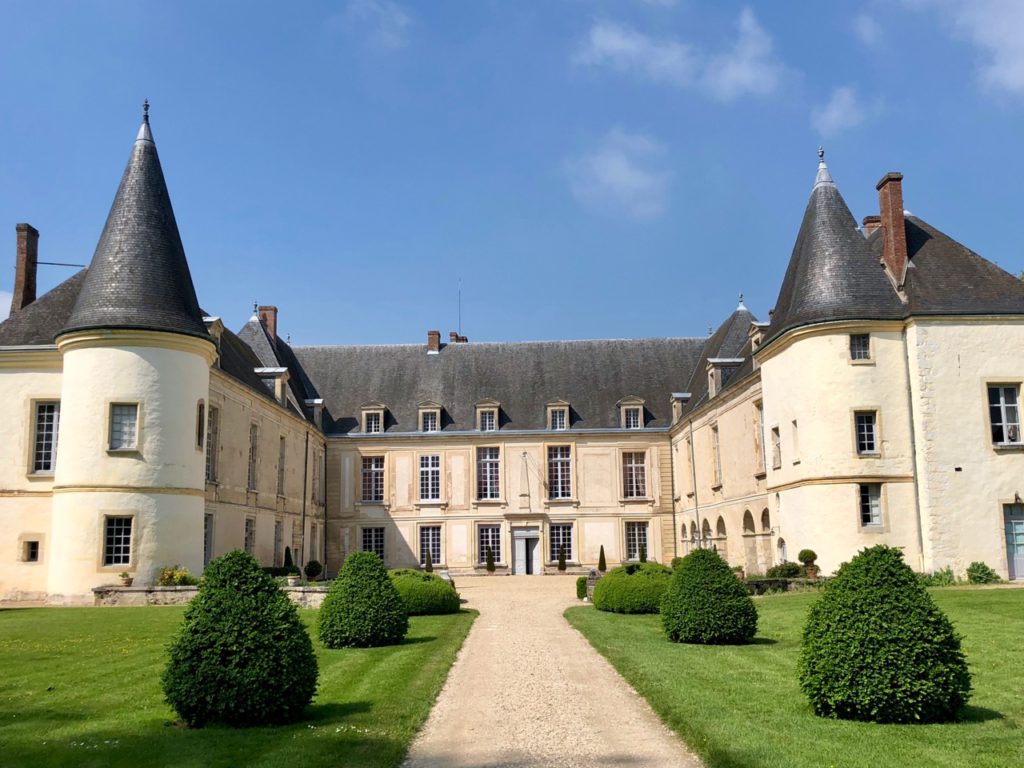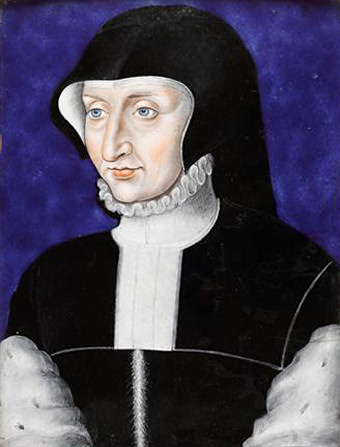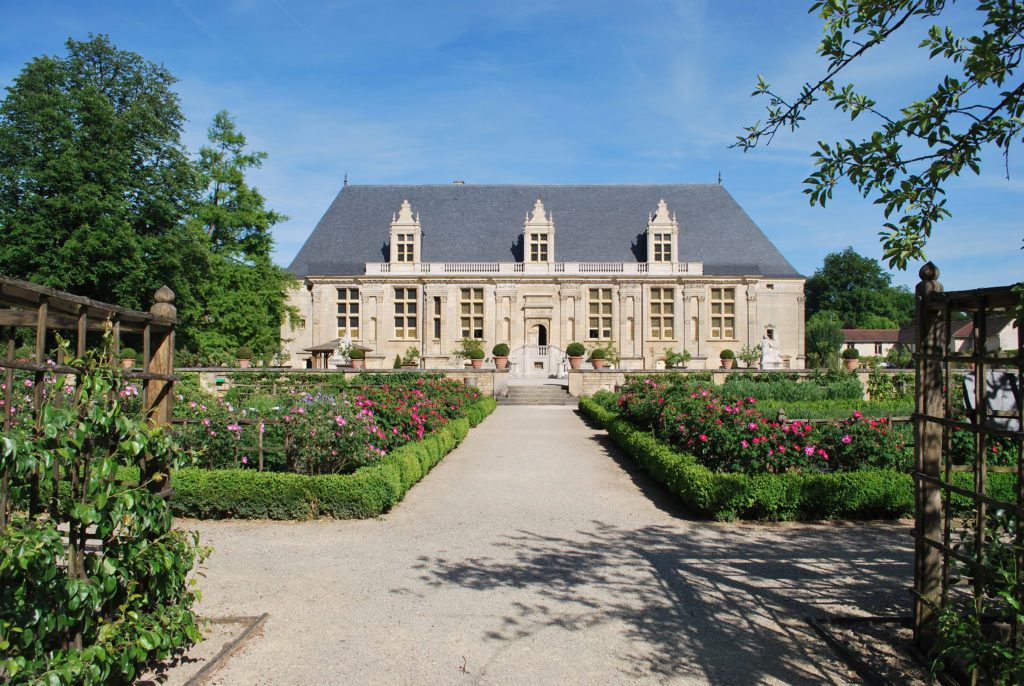Claude de Lorraine, who was also known as Claude de Guise, was born the 20th of October 20, 1496 at Château de Condé in Condé (now this place is called Custines in north-eastern France), in Lorraine. He had an eventful life, having been a favorite of King François I of France and a competent French general. A son of René II, Duke de Lorraine and Philippa of Guelders, Prince Claude de Lorraine had one surviving elder brother – Antoine de Lorraine, who inherited the Duchy of Lorraine upon their father’s death in 1508. Claude was only 13 when René passed away, and Claude inherited his parent’s French possessions, becoming Count de Guise, de Joinville, de Mayenne, de Elbeuf, d’Aumale, and de Boves. As Count de Joinville, Claude was also seneschal of Champagne. Most of Claude’s life was connected with the Valois court and France.


Soon Philippa brought her son to the court of King Louis XII of France, where he spent his adolescence. It was when Claude befriended his cousin – François d’Angoulême, who was Louis XII’s heir due to the Salic law in the country. According to the special royal edict of 1506, Claude became a subject of France, although the French aristocrats would continue to view him as a foreigner for the rest of his life. Louis arranged for Claude a marriage to his distant cousin – Antoinette de Bourbon, daughter of Count François de Vendôme and Marie de Luxembourg, and the wedding was celebrated at court on the 9th of June 1513. It seems to have been a good match because Antoinette and Claude were affectionate with each other, and they also produced a large progeny – 12 children, out of whom 10 survived into adulthood. Among them, the most notable ones were Marie de Guise, who would later marry King James V of Scotland, and François, Duke de Guise, who would become one of the main participants in the French Wars of Religion, which would break out in France soon after the untimely death of King Henri II in 1559.

Upon the ascension of François I, Claude became a member of the new monarch’s closest entourage. Claude was appointed a cupbearer to the king and joined the Privy Council. Claude, together with his brother Antoine, young Duke de Lorraine, and Jean, Cardinal de Lorraine and Bishop of Metz, participated in the royal campaign in Milan, which ended with the French triumph at the Battle of Marignano of 1515. During this battle, Claude fought like a hero and received 22 wounds, which resulted in his long convalesce – he eventually recovered. Claude’s bravery was much appreciated by King François, whose attitude to his subject became more affectionate. Soon François supported Claude’s claim to the County of Guise in the lawsuit that the House of Lorraine had against the House of Rohan. In the next few years, Claude earned the reputation of an excellent general after he had successfully fought against the English in Picardy in 1520, against the Spanish in 1521 at Fuenterrabia, and against the Imperial troops at Neufchâteau in northeastern France in 1523. Claude was made governor of Champagne and Burgundy in reward for his service.
After the defeat of the French army at the Battle of Pavia in 1525, King François was taken prisoner by the Spanish. During the monarch’s captivity, Claude shared power with Charles de Bourbon, Duke de Vendôme: they were both councilors to the king’s mother, Louise de Savoy, who acted as regent of France. In the same year, there was a revolt of peasants in Lorraine, and Claude raised an army, against the advice of the Regency Council, which marched on Lorraine and mercilessly massacred the poor men. It was one of the bloodiest episodes in Claude’s martial career, and for his brutality he was nicknamed ‘Great butcher’ (Grand Boucher). After the king’s return home, François got rid of the Bourbons in his entourage following the betrayal of Constable Charles de Bourbon who had conspired against the House of Valois with the emperor to invade and partition France. Claude de Lorraine was rewarded by his sovereign for his loyalty: the County of Guise was elevated to the Duchy of Guise, which made Claude the first person who held a ducal title in the French peerage despite not being a prince of the blood. Claude was also appointed the Grand Veneur de France, or Grand Huntsman of France (a position in the royal household in France during the Ancien Régime). These favors for Claude were the subject of envy for most nobles, and the Estates General protested as well, but they all had to comply with the king’s will.

During the next 10 years, Claude remained in the king’s entourage, acting as his effective advisor, his competent general, and sometimes his diplomat. Claude was dispatched to European countries on several missions and always accompanied the monarch in all his battles. However, Claude was jealous of Philippe de Chabot, Admiral de Brion, and of Claude d’Annebault, who both played a crucial role in the French victories in Savoy and Piedmont, which were occupied in 1536. In 1539, when François permitted the emperor to cross France with his men in order to deal with the uprising in Ghent in Flanders, Claude de Lorraine met with Charles V in Orléans. Claude accumulated a great deal of wealth and privileges, which François bestowed upon him. During the monarch’s illness in 1539, Claude sided with Dauphin Henri and Diane de Poitiers, acting as if François had already died, and upon the ruler’s recovery, François distanced himself from his former friend. As many were displeased with the high favor François had once given Claude, the king deprived Claude of the position of governor of Burgundy, leaving him only Champaign.
In 1544, the Imperial troops invaded Picardy and Champagne, seizing Saint-Dizier and Joinville. Nonetheless, Claude did not participate in military actions, instead ordering his eldest son, François, to join the royal army in order to help stop the invasion. Starting from that time, Claude channeled his energy into building a new castle – the majestic Château du Grand Jardin at Joinville, planning to live there in tranquility in retirement. Claude did not return to court until the death of François I in 1547. The new king, Henri II of France, wanted to ally with the House of Guise again, but Henri relied upon the younger generation – Claude’s sons François, Charles, and Louis. Claude outlived François I only by 3 years and passed away on the 12th of April 1550 at his beloved Château de Joinville. His widow, Antoinette, would have a long life: she would play a significant political role during the Religious Wars of France and die in 1583 at the age of 88.
All images are in the public domain.
Text © 2020 Olivia Longueville





